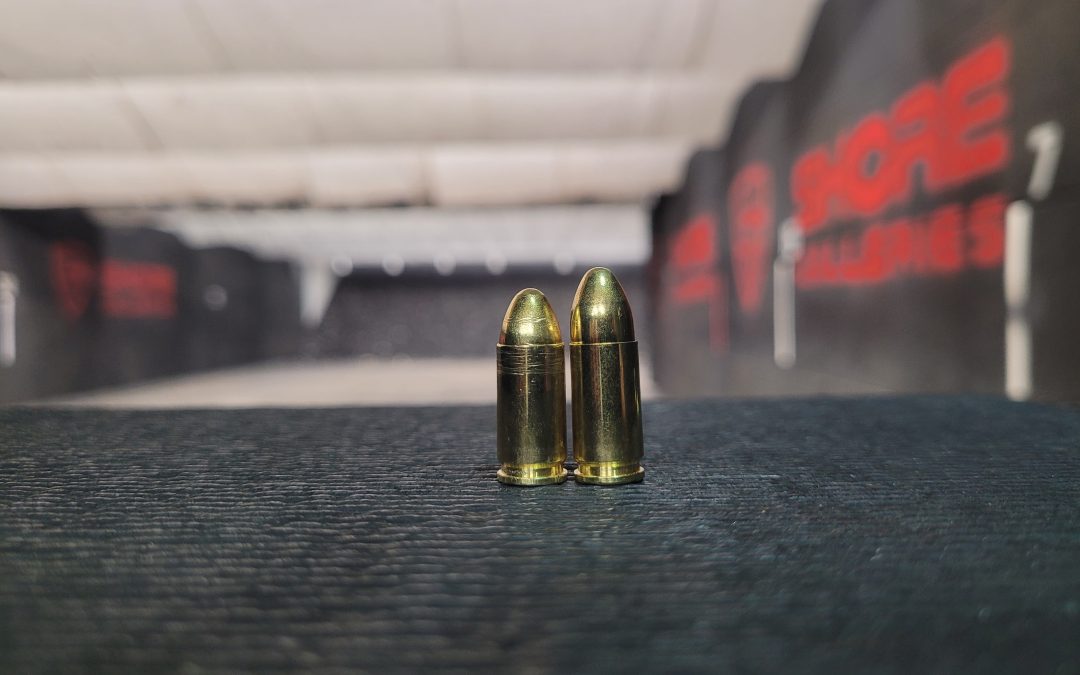
Ammo Test
If you carry a gun, at some point, you will have to unload and load your gun administratively. You will hear a couple differing opinions on re-chambering the round you clear from your gun and how many times you can do it. There are those that give no thought to this and never rotate that round out, repeatedly chambering that round multiple times. Then there are others that never chamber a round more than once or will swap it out after 4 times.
The problem is that there is no solid info on best practices regarding how many times you can rechamber a round, it’s always just been conjecture. I set out to test these practices and get some solid data with the understanding that this is not a laboratory environment.
What are some of the issues we have been told we could encounter? Change in overall length of the bullet, be it shortening or lengthening and dislodging the primer compound. Both can be problematic on their face, but what actually happens? It could be that we have an over pressured round, a round that won’t feed or a bullet that doesn’t go bang. We are going to find out.
This is going to be an ongoing experiment with multiple brands of ammo, hollow point and ball (FMJ). My first test was done with S&B 115gr fmj. This test was done with a gen 4 Glock 19. My process was obtaining an initial OAL (Overall Length) measurement, chamber the round repeatedly and measure it each time. Periodically, I would shoot these rounds to check the primer and over pressure. I used both slingshot/ power stoke on the slide or the slide stop to chamber the round. I did not perform this test until failure. Failure being defined as the gun blowing up in my hand or the bullet not firing. I stopped at 50 cycles because I felt I reached max reduction in OAL and was satisfied with the effects on the primer. 50 cycles also kept it at a nice number and represents, essentially, chambering the gun 1x per week for 1 year.
What I found was it doesn’t really matter. I never had a failure. I started out with an OAL of 0.75 on the calipers and stopped at 0.65. I saw a consistent pattern shortening every couple cycles. I stopped at 0.65 because after 10 cycles I no longer saw shortening of the OAL. There was a noticeable increase in felt recoil towards the end and I never had a primer failure. The bullet always went bang. Now while I never had a failure, do I recommend using a round that has been chambered repeatably…. no. I will still be maintaining my normal practice of marking my round each time they come out of or go into the gun. When the bullet has 4 sharpie marks on the head it gets cycled out into my training bag. This practice serves as cheap insurance to ensure my gun goes bang when I need it to. If you have to use your gun Murphy has already shown up and once he is there, he likes to hang out. If it can go wrong, it will go wrong. Below you will see my measurements for the 50 cycles. On the graph below when you see a new beginning overall length listed it is a new bullet that started over at 1 which was cycled to the corresponding number.
| beginning oal | oal | primer worked | ||||
| 1 | 0.75 | |||||
| 2 | ||||||
| 3 | 0.75 | y | ||||
| 4 | 0.75 | 0.75 | y | |||
| 5 | 0.75 | 0.75 | y | |||
| 6 | 0.75 | 0.75 | y | |||
| 7 | 0.75 | 0.75 | y | |||
| 8 | 0.75 | 0.74 | y | |||
| 9 | 0.75 | 0.73 | y | |||
| 10 | 0.75 | 0.73 | y | |||
| 11 | 0.75 | 0.74 | y | |||
| 12 | 0.75 | 0.73 | y | |||
| 13 | 0.75 | 0.73 | ||||
| 14 | 0.73 | |||||
| 15 | 0.73 | |||||
| 16 | 0.73 | |||||
| 17 | 0.72 | |||||
| 18 | 0.71 | y | ||||
| 19 | 0.75 | 0.71 | y | |||
| 20 | 0.75 | 0.72 | ||||
| 21 | 0.72 | |||||
| 22 | 0.71 | |||||
| 23 | 0.71 | |||||
| 24 | 0.7 | |||||
| 25 | 0.7 | |||||
| 26 | 0.7 | |||||
| 27 | 0.69 | |||||
| 28 | 0.68 | |||||
| 29 | 0.68 | y | ||||
| 30 | 0.75 | 0.68 | slide stop | |||
| 31 | 0.68 | |||||
| 32 | 0.68 | |||||
| 33 | 0.68 | |||||
| 34 | 0.67 | y | slide stop | increase recoil | ||
| 35 | 0.75 | 0.65 | y | slingshot | increase recoil | |
| 36 | 0.75 | 0.68 | ||||
| 37 | 0.68 | |||||
| 38 | 0.67 | |||||
| 39 | 0.66 | y | slingshot | increase recoil | ||
| 40 | 0.75 | 0.65 | slide stop | |||
| 41 | 0.65 | |||||
| 42 | 0.65 | |||||
| 43 | 0.65 | |||||
| 44 | 0.65 | |||||
| 45 | 0.65 | |||||
| 46 | 0.65 | |||||
| 47 | 0.65 | |||||
| 48 | 0.65 | |||||
| 49 | 0.65 | |||||
| 50 | 0.65 | y | slide stop | increase recoil | ||